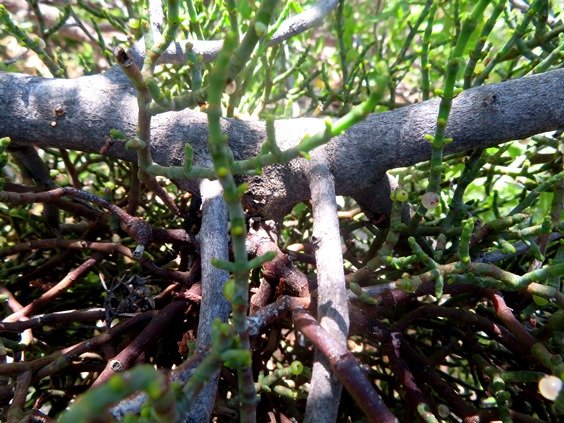Viscum capense on Euclea tomentosa

The bigger, pale grey branches belong to Euclea tomentosa, the host. The numerous green and brown (probably some dead) small ones are Viscum capense, the parasite, attached via its connecting haustorium to the host.
The haustorium enables the parasite to penetrate the tissues of its host and divert some of the host’s nutrients in transportation, like people making holes in oil or fuel pipelines for filling their containers (Curtis-Scott, et al, 2020; Vlok and Schutte-Vlok, 2015; Shearing and Van Heerden, 2008; Bean and Johns, 2005; Le Roux, et al, 2005; iNaturalist; Wikipedia).

